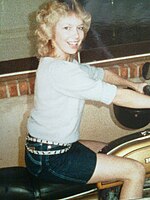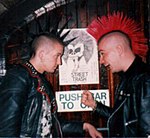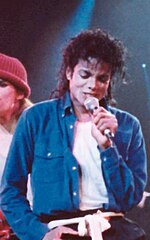
A skinhead or skin is a member of a subculture that originated among working-class youths in London, England, in the 1960s. It soon spread to other parts of the United Kingdom, with a second working-class skinhead movement emerging worldwide in the late 1970s. Motivated by social alienation and working-class solidarity, skinheads are defined by their close-cropped or shaven heads and working-class clothing such as Dr. Martens and steel toe work boots, braces, high rise and varying length straight-leg jeans, and button-down collar shirts, usually slim fitting in check or plain. The movement reached a peak at the end of the 1960s, experienced a revival in the 1980s, and, since then, has endured in multiple contexts worldwide.

"Shulchan Arukh, Even HaEzer 115:4". www.sefaria.org. Retrieved 28 November 2023.
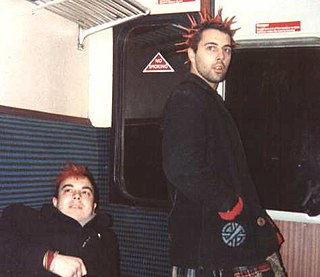
Punk fashion is the clothing, hairstyles, cosmetics, jewellery, and body modifications of the punk counterculture. Punk fashion varies widely, ranging from Vivienne Westwood designs to styles modeled on bands like The Exploited to the dressed-down look of North American hardcore. The distinct social dress of other subcultures and art movements, including glam rock, skinheads, greasers, and mods have influenced punk fashion. Punk fashion has likewise influenced the styles of these groups, as well as those of popular culture. Many punks use clothing as a way of making a statement.
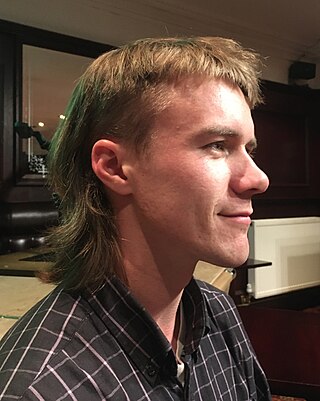
The mullet is a hairstyle in which the hair is cut shorter at the front, top and sides, but is longer at the back.

A crew cut is a type of haircut in which the upright hair on the top of the head is cut relatively short, graduated in length from the longest hair that forms a short pomp (pompadour) at the front hairline to the shortest at the back of the crown so that in side profile, so the outline of the top hair approaches the horizontal. Relative to the front view, and to varying degrees, the outline of the top hair can be arched or flattened at the short pomp front and rounded or flattened over the rest of the top to complement the front hairline, head shape, face shape and facial features. The hair on the sides and back of the head is usually tapered short, semi-short, or medium.
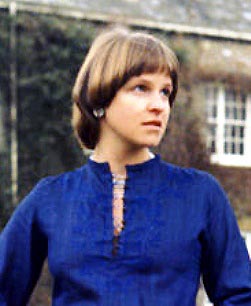
The pageboy or page boy is a hairstyle named after what was believed to be the haircut of a late medieval page boy. It has straight hair hanging to below the ear, where it usually turns under. There is often a fringe (bangs) in the front. This style was popular in the mid 1970s and 1980s.

The beehive is a hairstyle in which long hair is piled up in a conical shape on the top of the head and slightly backwards pointing, giving some resemblance to the shape of a traditional beehive. It is also known as the B-52 due to a resemblance to the distinctive nose of the Boeing B-52 Strategic Bomber. The 1980s band The B-52's, took their name from the hairstyle which was worn by members Cindy Wilson and Kate Pierson.

Fashion in the 1990s was defined by a return to minimalist fashion, in contrast to the more elaborate and flashy trends of the 1980s. One notable shift was the mainstream adoption of tattoos, body piercings aside from ear piercing and, to a much lesser extent, other forms of body modification such as branding.

Fashion of the 1980s was characterized by a rejection of 1970s fashion. Punk fashion began as a reaction against both the hippie movement of the past decades and the materialist values of the current decade. The first half of the decade was relatively tame in comparison to the second half, which was when apparel became very bright and vivid in appearance.
Curtained hair or curtains is a hairstyle featuring a long fringe divided in either a middle parting or a side parting, with short sides and back. Curtained hair generally applies to males, although an alternative name, the undercut, is used for both male and female haircuts following this style. Variations on this haircut have been popular in Europe, North America, and Japan throughout the 20th century and in the 21st century, peaking between 1986 and 2001.

2000s fashion is often described as a global mash up, where trends saw the fusion of vintage styles, global and ethnic clothing, as well as the fashions of numerous music-based subcultures. Hip-hop fashion generally was the most popular among young people of all sexes, followed by the retro inspired indie look later in the decade.
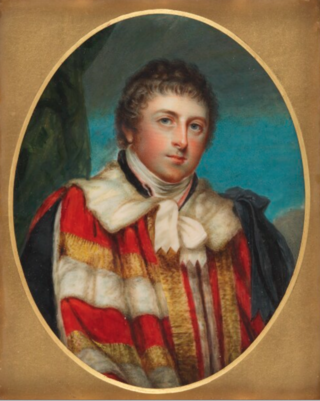
An eponymous hairstyle is a particular hairstyle that has become fashionable during a certain period of time through its association with a prominent individual.
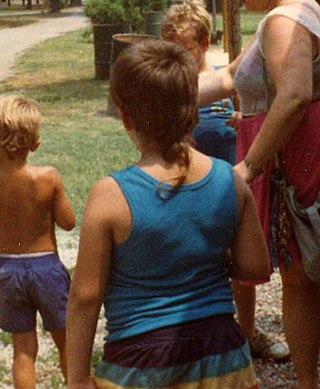
A rattail is a hair style that is characterized by a long "tail"-like element of hair growing downward from the back of the head. The rattail usually hangs naturally; however, it can be braided, treated as a dread, permed, straightened, poofed, or curled with an iron. In some instances, an individual might choose to grow several tails as opposed to a single very long tail. A rattail is characterised by hair longer than the rest of the hair surrounding it.

A punch perm is a type of tightly permed male hairstyle in Japan. From the 1970s until the mid-1990s, it was popular among yakuza, chinpira, bōsōzoku, truck drivers, construction workers, and enka singers. The punch perm began to fall out of usage as a result of its general association with the yakuza, as well as normal fashion trends. The style is similar to the Jheri curl, which was popular in the United States during roughly the same time frame, but the curls in a punch perm are much tighter.
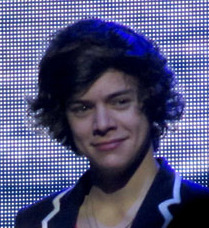
The wings haircut, also known the Mod haircut, Mop top, flippies, flow, Justin Bieber haircut, or skater hair is a popular hairstyle used in the skateboarding, surfer, mod, and preppy community. Typically long, the style can range from long and drooping below the eyes, to a shorter length. The haircut is typically wavy and, if straight, the length comes to halfway down the ears. Instead of lying on the wearer's ears, the hair flips up and comes straight out like an airplane wing, hence the name. The hairstyle was popular among men in the 1960s, 1970s, mid-late 2000s, early 2010s and 2020s.

A shag cut is a hairstyle that has been layered to various lengths. It was created by the barber Paul McGregor. The layers are often feathered at the top and sides. The layers make the hair full around the crown, and the hair thins to fringes around the edges. This unisex style became popular after being worn by various celebrities, including Joan Jett, David Bowie, Mick Jagger, Rod Stewart, David Cassidy, Jane Fonda, Stevie Nicks and Florence Henderson in the early 1970s. During the 1990s, Jennifer Aniston popularized "The Rachel" hairstyle, and Meg Ryan wore a shag in the early 2000s. The haircut had a resurgence in popularity during the early 2020s.

The 2010s were defined by hipster fashion, athleisure, a revival of austerity-era period pieces and alternative fashions, swag-inspired outfits, 1980s-style neon streetwear, and unisex 1990s-style elements influenced by grunge and skater fashions. The later years of the decade witnessed the growing importance in the western world of social media influencers paid to promote fast fashion brands on Pinterest and Instagram.

Surfer hair is a tousled type of hairstyle, popularized by surfers from the 1950s onwards, traditionally long, thick and naturally bleached from high exposure to the sun and salt water of the sea. In the late 1960s and 1970s, the long hair and general lack of personal grooming was closely associated with hippie culture. Today, hairstyling companies brand their own hair gels, shampoos and hair wax to achieve the "surfer look" with hairstyles that are often shorter than traditionally, which often require more grooming to achieve the permanent hair lift or intentional windswept look. Amongst women, fashion magazines have referred to "sun streaked surfer hair" as a desirable look for women, although genuine surfer hair is often heavily damaged by the elements.
The undercut is a hairstyle that was fashionable from the 1910s to the 1940s, predominantly among men, and saw a steadily growing revival in the 1980s before becoming fully fashionable again in the 2010s. Typically, the hair on the top of the head is long and is often parted on either the side or center, while the back and sides are buzzed very short. It is closely related to the curtained hair of the mid-to-late 1990s, although those with undercuts during the 2010s tended to slick back the bangs away from the face.
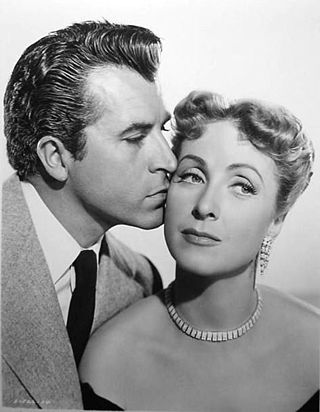
In the Western world, the 1950s were a decade known for experimentation with new styles and culture. Following World War II and the austerity years of the post-war period, the 1950s were a time of comparative prosperity, which influenced fashion and the concept of glamour. Hairstylists invented new hairstyles for wealthy patrons. Influential hairstylists of the period include Sydney Guilaroff, Alexandre of Paris and Raymond Bessone, who took French hair fashion to Hollywood, New York and London, popularising the pickle cut, the pixie cut and bouffant hairstyles.
